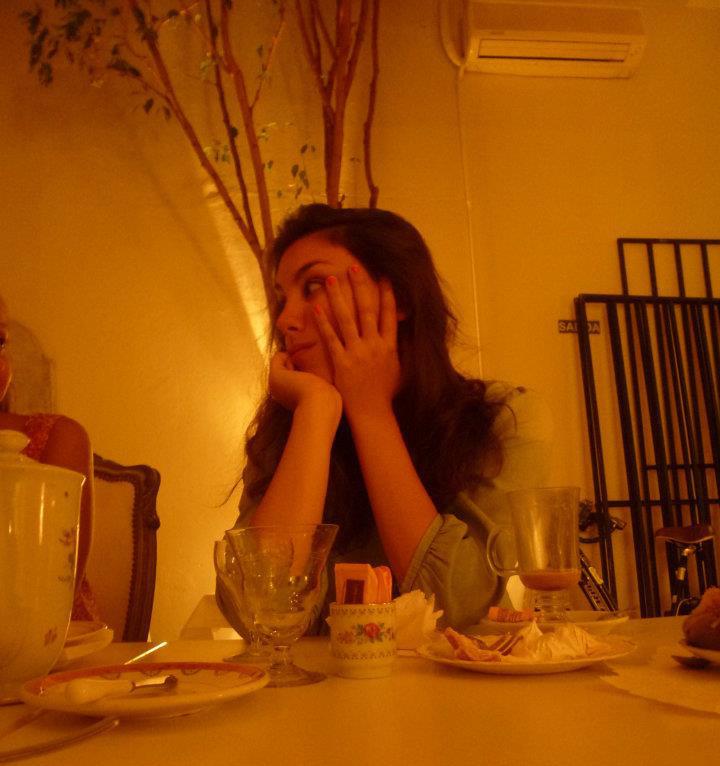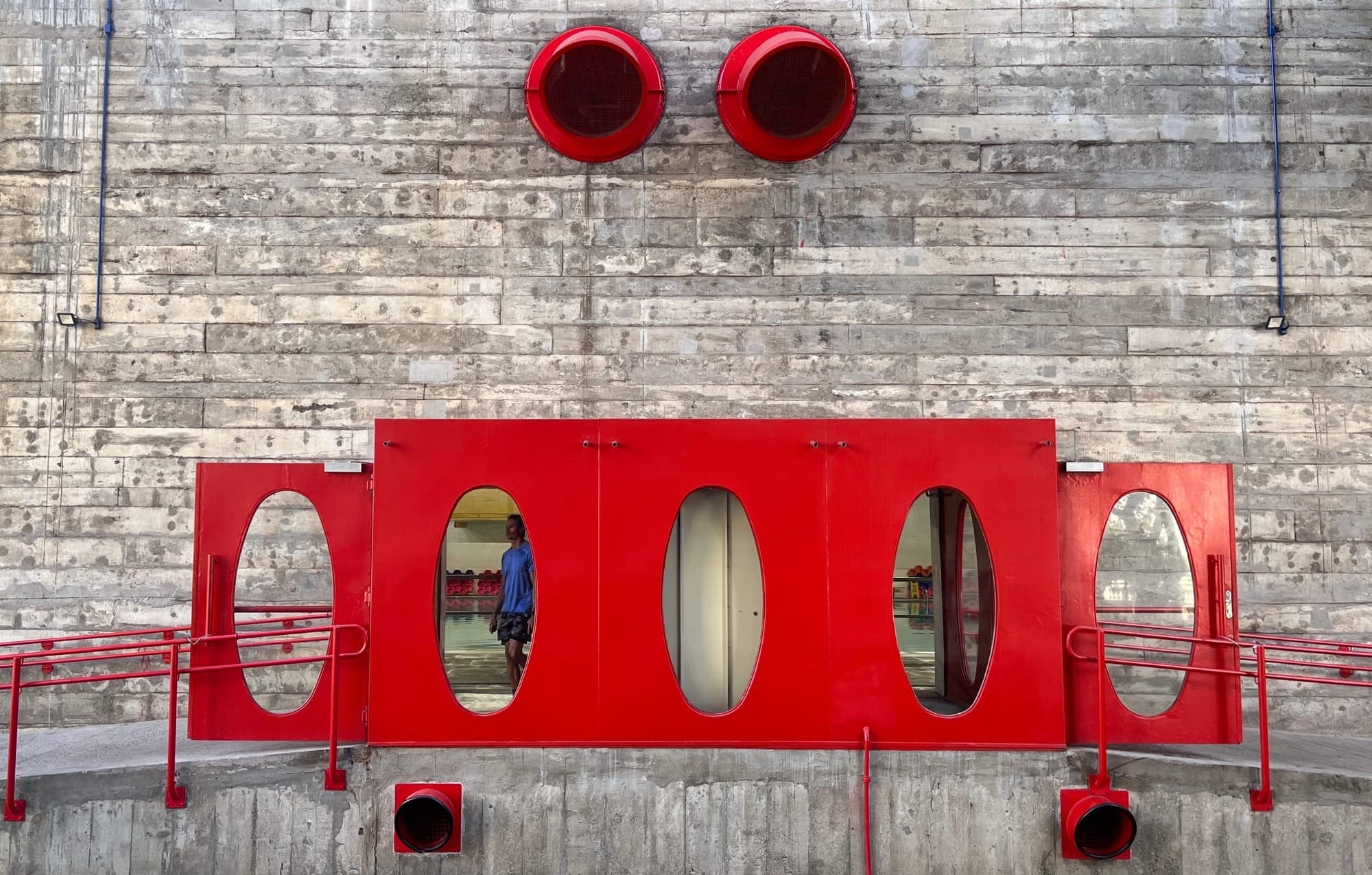
"Architecture is not a utopia, but a means to achieve some collective ends."
Lina Bo Bardi , 1990
Traveling to São Paulo was like stepping into space and seeing ourselves as the little ants we are: a top-down perspective I'd never had so readily at hand. A quintessential memento morithat reset my axis. It was a bath of humility, yes, but also one of finality. A freezing bath in summer, after which I didn't want to die without first saying certain words, making certain decisions, and doing a lot of things.
________________________
It's 2024, January, and I get a notification on my phone. A message from Ale (aka Bauhasaurus)saying: "Here's the scoop." I open it. It's a PDF: MODERN Brazil . I scream. I've only known São Paulo through the eyes of Rogerio Sganzerla in his film The Red Light Bandit . I've never taken a tour before. I've always wanted to take a guided architectural tour because when I travel, I feel like I'm missing information and missing the conversation with someone who knows a lot. I walk looking up; I enter palaces, churches, and museums; I rest in parks and public squares; I read facts and curiosities about each place I visit, but I have no one to go back and forth with, to reconfirm my excitement, to hear what only someone who's studied too much can convey. The euphoria over Ale's message is such that I can't articulate my mind enough to cross-reference names and places. I close it. I'm going to go to São Paulo without knowing anything, I decide. I'm going to wait for everything.
Back home, I open that PDF again. Now what I'm reading makes sense in my mind. It has a life: history, scent, and form. Lina Bo Bardi — red , I think; Decio Tozzi — green ; Vilanova Artigas — caramel ; Niemeyer — white . I don't pretend they make instant sense to anyone outside my head or who hasn't traveled through modern Brazil , and yet these are colors that now and forever remind me of names, structures, and places; they are protagonists in every architect's work.
________________________
Today I'm going to continue writing about red , this time to talk about Lina Bo Bardi , the SESC, community life, leisure , and pause. Lina Bo Bardi used red as her personal trademark. She said it was a blood red, pumping through the concrete. It's an explanation you can't unlearn because once you've walked through them, you know her buildings are alive.
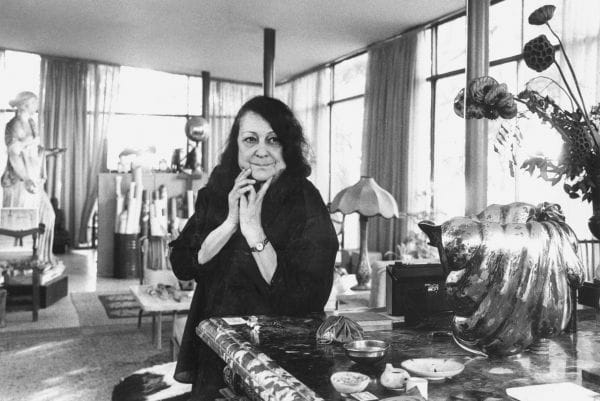
Lina was born Achillina Bo in Rome, Italy, long before the war. Afterward, she migrated with her husband, Pietro Bardi, to São Paulo . He was an art collector, she was an architect. He was a fascist, she was an anarchist. Both, it seems, were accused of being traitors by their respective parties. How much of this is fiction? That's beside the point; that's a story for another novel, an adventure novel.
Lina's architectural debut is the São Paulo Museum of Art , MASP (pronounced maspi ), a simple—in the opposite sense of composite , due to its concrete and steel structure—and monumental form located on Avenida Paulista. Her signature work is the SESC Pompeia , a community leisure center in a working-class, factory neighborhood. The Lazer Factory , as Lina christened it (a name that never caught on), has a swimming pool, theaters, a gym, courts, a bar, a library, a dining room, spaces for art exhibitions and workshops. And also places to do nothing.
Doing nothing in Brazil is a bastion. There's something of the Italian Dolce Far Niente about it—the Tana tradition is undeniable due to its strong immigration. In Brazil, they speak of lazer , which can be translated as leisure, although we already know how much is lost in translation. In Brazil, it's an active, collective, and pleasurable leisure. It's not the contemplation of doing nothing, lying on the beach or in the park with a drink in hand—which Brazilians, especially those from Rio de Janeiro, are native to and promote—but it contains it. It's a fun break and everything that work isn't. That's why Lina wanted to associate lazer with the created space. It was a name that sought to perform its use, something that architecture far surpassed, and which its current name, Cidadela da Liberdade , also represents.
SESC Pompéia
SESC Pompéia began as a factory. In 1977, Lina was asked to make room there by demolishing the old structure and building something new on the rubble. Instead, she chose to protect the site's existing vitality. The factory, no longer producing, was occupied by residents, neighborhood soccer teams, and a theater company, so Lina expanded its recreational, neighborhood, and collective use.
In general, Lina 's idea was to build unfinished spaces that would be completed in use. A humanist architecture that sought a dialogue between the modern and the popular. Or how to make the modern a popular meeting place . Thus, she restored and refurbished the factory buildings and warehouses and built new buildings incorporating two concrete towers connected by open-air pedestrian walkways, with high edges, without railings, at great heights. Walkways that impact, give vertigo, and awaken a certain death instinct in anyone who peers over the edge. The towers' windows and their shutters are emblematic: striking in a photograph; unforgettable in person. I remember them and something throbs strongly within me; it's the emotion of having been in places I'd only seen in books.
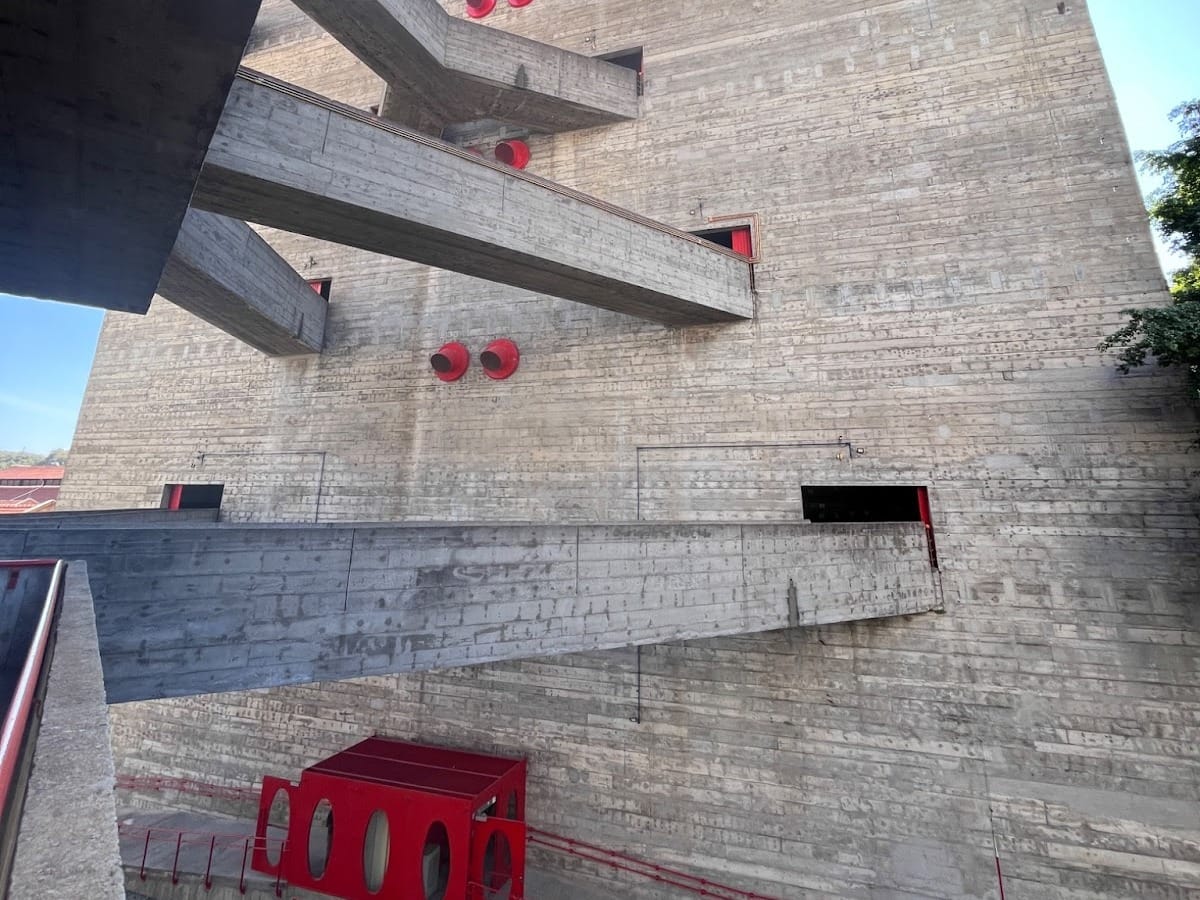
SESCs are non-governmental initiatives with free public access, with fee-based activities based on the neighborhood where they are located. SESC , pronounced sésqui , is the acronym for Serviço Social do Comércio (Social Service of Commerce): an organization linked to the national business federation, created in the 1940s to provide health services and cultural activities. SESCs are primarily aimed at the well-being of their employees and their families, but are open to the wider community. They offer everything, including doctor's offices (Monday through Saturday) and cafeterias at affordable (ridiculous) prices.
It's a project that floats on a poetic and extinct idea, but above all, a pragmatic one: for the prosperity of companies, the prosperity of workers is necessary. A humanist project of work, something that here sounds like social justice because it's also a fight against the expansion of sordid places in everyday life, those that, as Juan Perón said, inevitably create sordid people. I don't (yes, I do) want to dream big, and yet I can only imagine a SESC in the middle of Once and another in La Matanza.
SESC São Paulo
The São Paulo SESC has 43 units across the state, financed by the S System, a trust fund set up by industrial employers for social development. The concrete SESCs are not shells but fortresses of collective leisure, custodians of leisure , material conditions for relaxation and rest. It is unproductive spending as public policy in buildings that provide a pause from unjust life, isolation, and screens. This architecture is not just form and style: it is a political project. A concrete way of organizing well-being, leisure, and encounter.
The staging of concrete as a material is impressive , where the structure takes center stage and breaks up a vast, green, jungle-like context. These are sublime, busy, living, and brutal buildings ( but not brutalist, which is an architectural movement from another place, another time, and another spirit ). They are gigantic, spectacular gray monsters with soft hearts. Full of people. A crowd that has plenty of spaces for gathering and congregation. Spaces of shelter, shade, and refuge. Spaces of leisure . A beauty that doesn't seek temporality but transcendence, like the classics.
A high quality of life also means that: having free meeting places that bring the community together in activities that improve daily life. Addressing mental health also means creating free sports spaces with everything needed to get involved. Designing policies to prevent people from falling into destructive and devastating addictions involves creating spaces with initiatives that literally get you out of the habit. It's no coincidence that the SESC 24 de Maio is right next to Crackolandia (crackland), a neighborhood renamed by its residents.
SESC May 24
A façade connects the exterior with the interior. It can do so with walls. It can do so with windows. It can do so with doors, and even without, as many of São Paulo 's modern buildings do . As SESC 24 de Maio does , where there are no entrance doors because everyone is welcome . As Vilanova Artigas himself said, "buildings that are the specialization of democracy where all activities are lawful." It is the continuity of space that fosters social integration .
The SESC 24 de Maio (2017) is a free, publicly accessible building with paid artistic activities. A six-story structure, accessible in three ways: by elevator, stairs, or ramps. And the ramps are inclusive not only for movement and circulation: they are corridors for ascent and descent that invite conversation and greeting, encounters and conviviality. It is in the open and fluid experience they offer that visitors can move freely and stop to interact, observe, or rest at any point along their journey. This is what Paulo Mendes da Rocha envisioned (google it and shed tears of emotion).
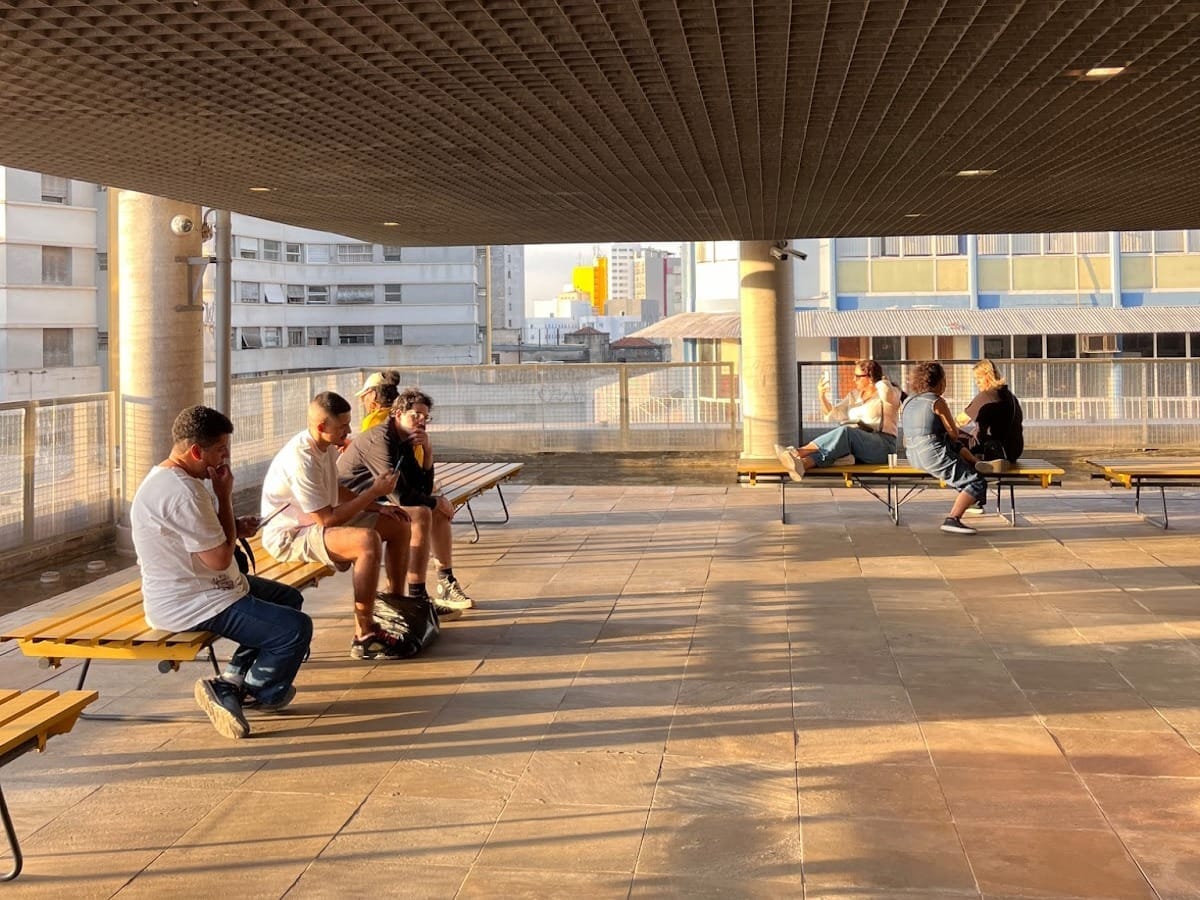
The second-to-last floor, in particular, is absolutely beautiful. It smells of coffee, the sound of a sink can be heard in the distance, and a trickle of water to wet your feet. In the center, there's a void in the ceiling where rain can enter, and the floor is grooved so that the spectacle of nature isn't interrupted by any worldly concerns. They are stacked plazas : each floor is unique, with its own theme and activity.
Some time ago, Manuel Becerra pointed out an urgent need that only made me travel back to São Paulo : "It's essential for families to have organized routines around daily conversation and collective leisure time. Words and tenderness are indispensable. And for that, material conditions are needed, above all, but not only." Community spaces that endure the elements to open up, that invite leisure, rest, and enjoyment, are above all a refuge.
And I understand that the article and what it describes seems like an ode to beauty—and it aims to be one—but modern architecture in São Paulo isn't just a technical or aesthetic pursuit; it's a national project for national development and growth . And the architects of the São Paulo school are professionals at the service of their country.
________________________
São Paulo changed my life in many ways. It gave me back a spark and brought me back to expressing myself through words. Not inviting everyone I meet to experience it is like keeping a secret that only lives on in the open. São Paulo is chaos, and in that chaos, nature is alive and moving. Because moving, mobilizing, is continuing to live.
I wrote a few more things about the trip, which you can read at https://medium.com/@agustinasojit/
You can also travel for inspiration; follow Ale Csome . He understands the limits of reality and, of course, wasn't going to leave anyone out: the trip was entirely filmed, recorded and edited by Fran with a keen and generous eye, so that everyone, wherever they are, can experience it. Ale has launched a new trip to Rio de Janeiro for September of this year to visit some of these gems of Carioca architecture .

